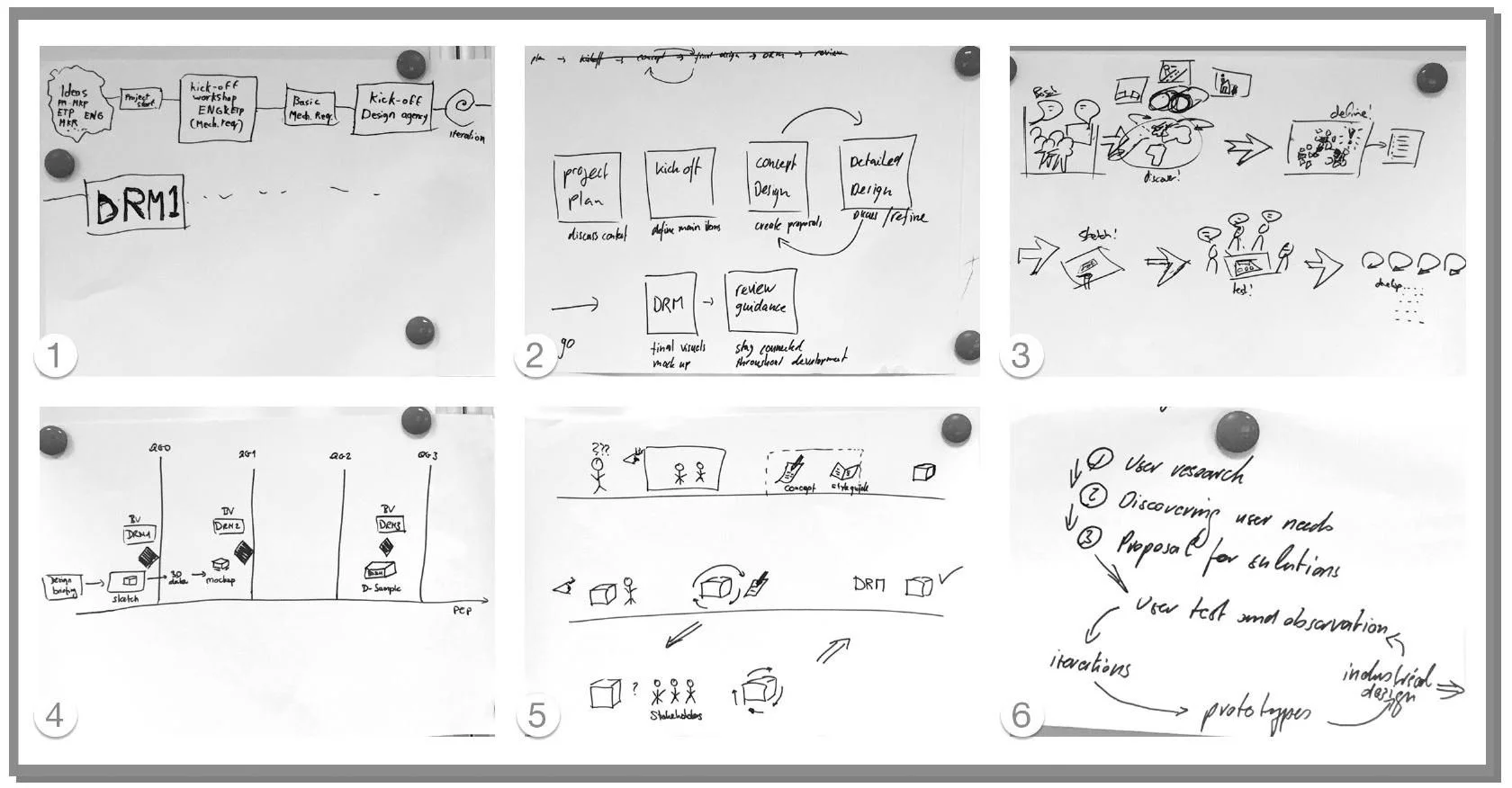HOW TO INTEGRATE HUMAN-CENTERED DESIGN PRINCIPLES INTO AN EXISTING CORPORATE DESIGN?
Warm-up Activity: Mental Models – In 15 minutes, sketch the current design process.
Case Study: Human-Centered Design at Bosch Security Systems
This study, conducted in collaboration with Bosch Security Systems in Grasbrunn, Germany, aimed to integrate human-centered design principles into the company's established visual brand language (VBL). The central marketing department had previously developed a VBL guideline for all products across various business units (BUs). However, ensuring consistent adherence to this guideline while also prioritizing user-centric design posed a significant challenge.
The primary research questions were:
How can user-centered design principles be effectively integrated into an existing visual brand language?
How can the product design process be made more user-centered and intuitive?
UX Methods Employed:
Analysis-Synthesis Bridge Model: A qualitative research approach used to bridge the gap between data analysis and synthesis.
Expert Interviews and Secondary Research: Gathering insights from industry experts and existing research.
Design Thinking Workshop: Facilitating a collaborative workshop to define mental models, create user profiles, identify value propositions, and engage in group ideation and brainstorming.
User Profiles and Value Propositions: Developing detailed descriptions of target users and their needs to guide design decisions.
Design Exercise: Business Origami Prototyping: Creating rapid prototypes and testing them with real users using the business origami methodology.
